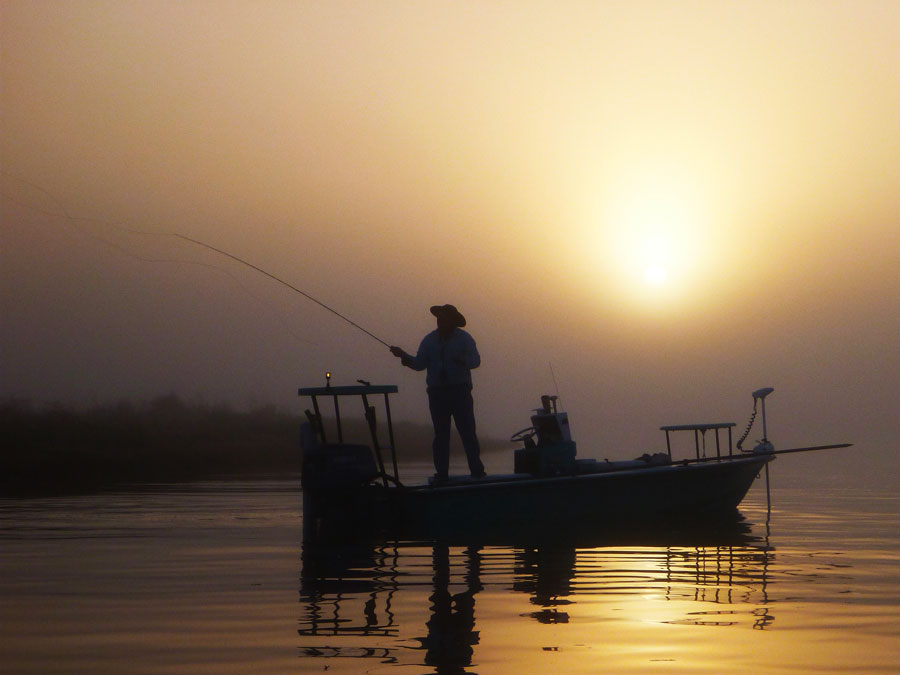
Fish Heaven, photo by Tammy Wilson
It’s a cold post-frontal January morning in east Central Florida. While launching my skiff in predawn darkness I can barely see the end my trailer as a heavy fog bank has settled in. Luckily, I know this part of the Saint Johns River like the back of my hand, so finding my intended fishing spot in zero visibility goes according to plan. Heavy fog of this nature is uncommon on the Saint John River basin, requiring a precise mixture of warm river water, cold winter air and dead calm conditions to occur. Idling slowly through the impenetrable fog to position my skiff, and I can hardly bare the anticipation of my first cast and the impending solid pull of an American shad on my 5-weight fly rod. As I lay out my first cast and my fly settles in a shad takes and the battle is on. On the first hard run this hearty fish takes me into my backing, jumps sever times and starts doing laps around my boat. As the battle wains and my excitement peaks, my mind drifts back some 50 years to my very first shad fishing trip with my Uncle Joe.
It was late January 1965, and I’d been planning my first shad fishing trip with my Uncle Joe for over a month. I could hardly stand my anticipation of the coming shad season on the St. John River and my early morning rendezvous at Uncle Joe’s house, two doors down at 6am sharp. In preparation for the trip, we eagerly rigged out Uncle Joe’s trusty Orlando Clipper boat the afternoon before and hooked the trailer to his truck. My mother packed us a lunch, and all of my next days clothes were neatly laid out before going to bed. I set my alarm clock for 5:30am, and I hit the sack early so I would be fully rested for our next day’s adventure. Little did I know my older sister Sandy had plans of her own, and after falling asleep, she snuck into my bedroom and changed the time on my alarm clock, moving it ahead by two hours. She also changed the time on all of the clocks in the house, as not to alert me to her trickery. Needless to say, Uncle Joe was not real happy to see a 6-year old boy at his front door fishing rod in hand at 4am, but luckily for me, my Uncle Joe shared the same passion and excitement for fishing as I, and this story later became legendary within our family and oh yes Sandy still has some payback coming.
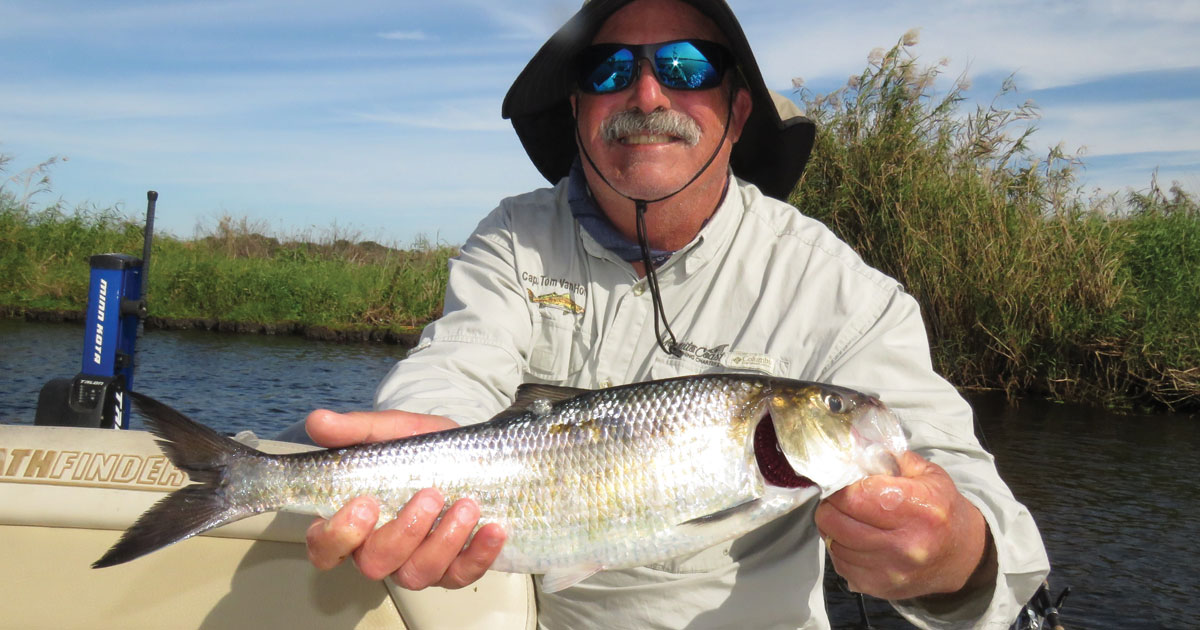
Captain Tom (Me) with a nice American Shad, Photo by Captain Ron Presley
Between 1950 and 1970, American shad fishing was extremely popular in Central Florida, and the arrival of the first run of the poor man’s salmon was a much anticipated event. Anglers from across the state of Florida and the eastern Atlantic seaboard swarmed to the St Johns River on the first reports of shad. There was even a month long tournament call the Shad Derby, where for a fee of 5 dollars per angler, the individual who caught the largest shad won a new boat, motor, and trailer. Huge fish camps like Lemon Bluff and Marina Isles lined the banks of the St Johns River to support the then popular recreational fishery, but like most of old Florida and the popularity of shad fishing, they have long faded away.
As the largest member of the herring family, American shad ascend freshwater rivers along the Atlantic coast of America each spring from the ocean to spawn. Juveniles spend their first growing season in the river of their birth and then swim to the ocean in the fall to grow and mature. They remain in the ocean for two to six years before they become sexually mature and return to spawn in the river they were originally hatched.
Historically, shad had been an important food source in North America since the colonial era. Shad have also been important to recreational anglers in the modern era; however, recreational angling peaked on the St. Johns River during the 1950s and 1960s. Atlantic coast commercial landings peaked at the turn of the twentieth century but have declined dramatically along with most of the shad’s range. Obstruction of spawning runs, pollution, and high harvest rates have all taken a toll on abundance, prompting the Atlantic States Marine Fisheries Commission (ASMFC) to mandate protective measures that include a directive to monitor existing populations and rebuild stocks.
Commercial landings in the St. Johns River also peaked in the early 1900s and declined significantly throughout the century. Recreational effort and landings have also decreased markedly in recent years. The Florida net ban in 1995 eliminated most of what remained of Florida’s commercial American shad fishery. Later in 2005, a commercial fishery off the coast of the mid-Atlantic states were terminated and should no longer be impacting the stock.
Today, both American and hickory shad are holding their own and they start arriving on their annual spawning run to the southern reaches of the St. Johns River between Lake Monroe and Lake Harney “Shad alley” around Christmas day, with the peek run occurring near the middle of February. They then move south into the vast marshes of the St. Johns between Lake Harney and Lake Washington. Concentrations vary from year to year based on water levels and other environmental factors. Remember, the average age of American shad is only four to six years old when they return to the river of their hatch to spawn, and like salmon, the majority of the adult St Johns River shad die from exhaustion once the spawning season is complete. Therefore, the quality of shad runs can vary from year to year based on the successful spawn of their parents.
Shad can be caught in any number of ways, from light fly fishing to slow trolling or casting small darts and spoons on ultra light spinning rods.
For spinning gear, I like a 6’ ultralight rod with a 2000 series reel, spooled with six pound test braided line. Most anglers either slow troll or cast shad rigs which consist of a small brightly colored tandem dart or and spoon combination. Hardcore Shad Spoons is a good source for online orders. The only tackle shop in Central Florida carrying shad rigs is Bitters Bait and Tackle in Longwood, Florida.
As for fly fishing, I suggest a 4 or 5 weight matched rod and reel with sufficient backing, and either a floating or intermediate (sinking) line depending on if you are fishing in shallow or deep water. I would also suggest a fluorocarbon leader and a small brightly colored weighted flies like the Crazy Charlie. Another highly suggested resource for those avid fly anglers is to attend the monthly meeting of the Back Country Fly Fishing Association OrlandoThe best and only fly fishing shop in Orlando is the Orlando Outfitters, and their owner and staff will gladly assist you in getting set up for shad. The final fly fishing resource available to the public is the Shad on Fly Facebook Page.
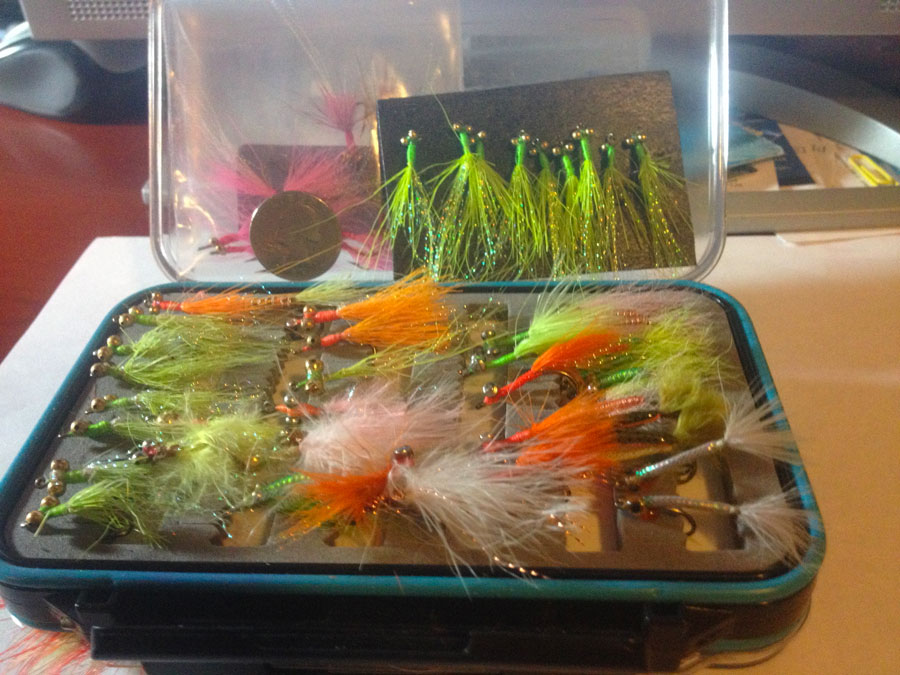
My American Shad Fly Assortment
Although small, averaging between two and four pounds on the St Johns, American shad are a feisty, run and jump, dig deep, cart wheeling, fun fish most anyone can catch. And the best part of shad fishing is it’s a great way to spend time fishing during the winter in Central Florida on those cold and windy snotty days when fishing the open waters is out of the question. It’s a late in the day, sleeping in, second cup of coffee type of fishing, which is perfect on those cold winter days.
There is hope as commercial harvest is eliminated and water quality improves, the American Shad stock will rebuild and this will be reflected in improved recreational catch rates and renewed recreational interest in the species. Either way, if you haven’t experienced the American shad run during the winter in Central Florida, you are missing the boat, so get hooked up and have some fun. Speaking of boats, is that an Orlando Clipper easing in through the fog? It must be Uncle Joe, I think I’m in Fish Heaven.


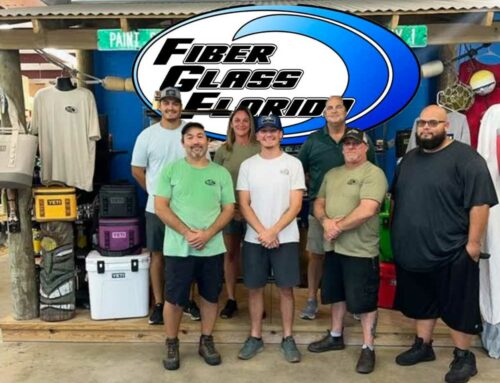
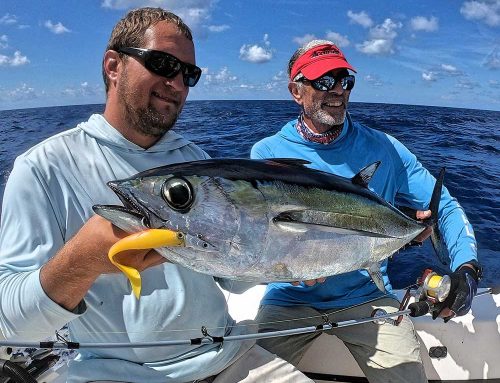
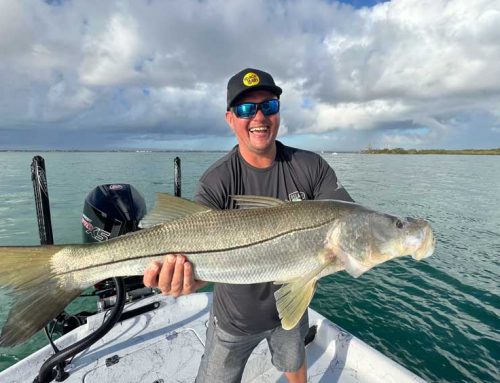


Leave A Comment
You must be logged in to post a comment.